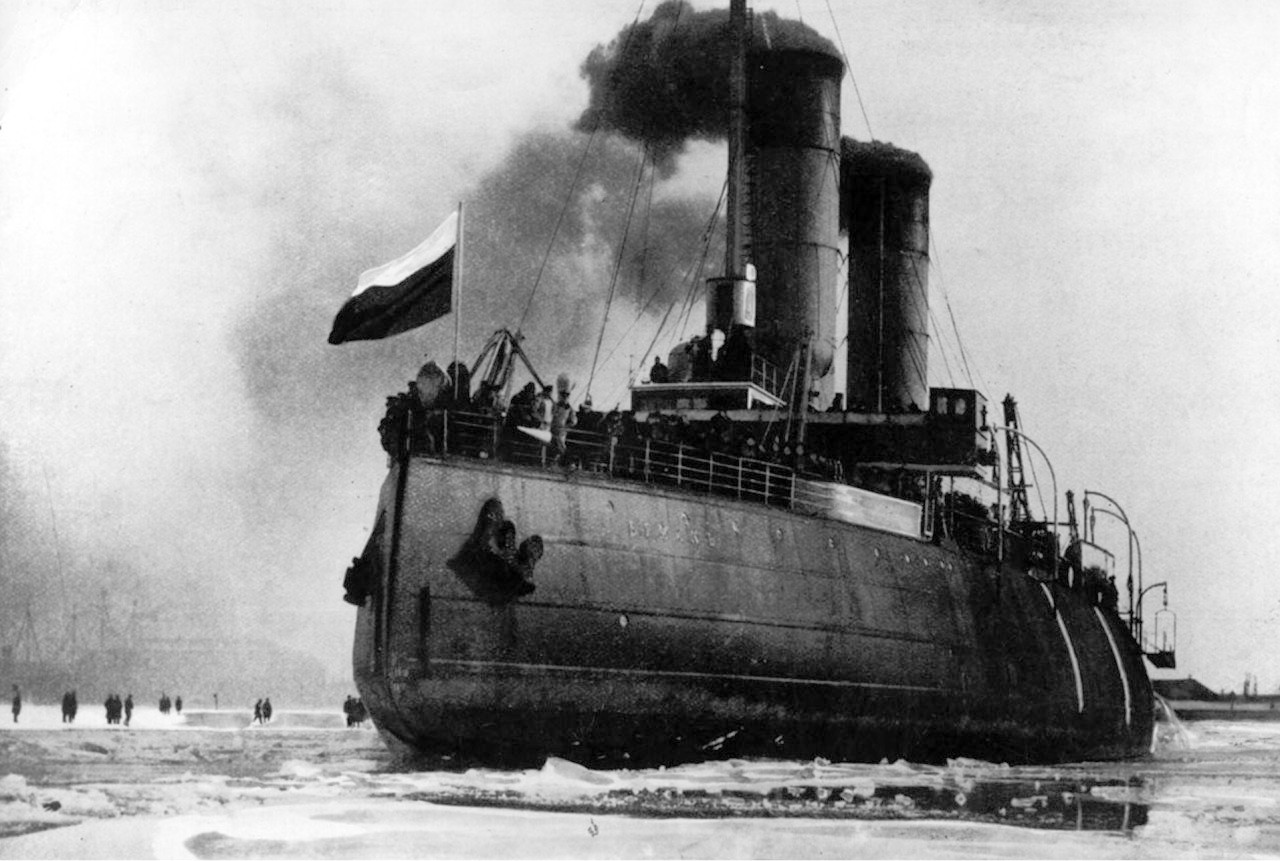Yermak (1898 icebreaker)


Yermak (Russian: Ермак) (sometimes spelled Ermak) was a Russian and Soviet icebreaker, often referred to as the world's first true icebreaker, with a strengthened hull shaped to ride over and crush pack ice.
Yermak was built for the Imperial Russian Navy under the supervision of Admiral Stepan Osipovich Makarov by Armstrong Whitworth in Newcastle upon Tyne at its Low Walker yard and launched in 1898. She was named after the famous Russian explorer of Siberia, Don Cossack ataman Yermak Timofeyevich.
She was commissioned on 17 October 1898, and on the very first voyage she reached 81°21'N north of Spitsbergen in 1899. It had been constructed to break through a heavy (up to 2 m thickness) ice.
Yermak had been used in winter of 1899-1900 to set up 1st radio communication link in Russia between Kotka and Gogland (Suursaar) island (distance 47 km).
Between 1899-1911 Yermak sailed in a heavy ice conditions for more than 1000 days.
Yermak served with different branches of Russian and Soviet Navy and Merchant Marine up until 1964, becoming one of longest-serving icebreakers in the world. An island in the Nordenskiöld Archipelago was named after this icebreaker.
Another icebreaker with the name Yermak was built for the Soviet Union at Wärtsilä shipyard in Helsinki, Finland in 1974.
